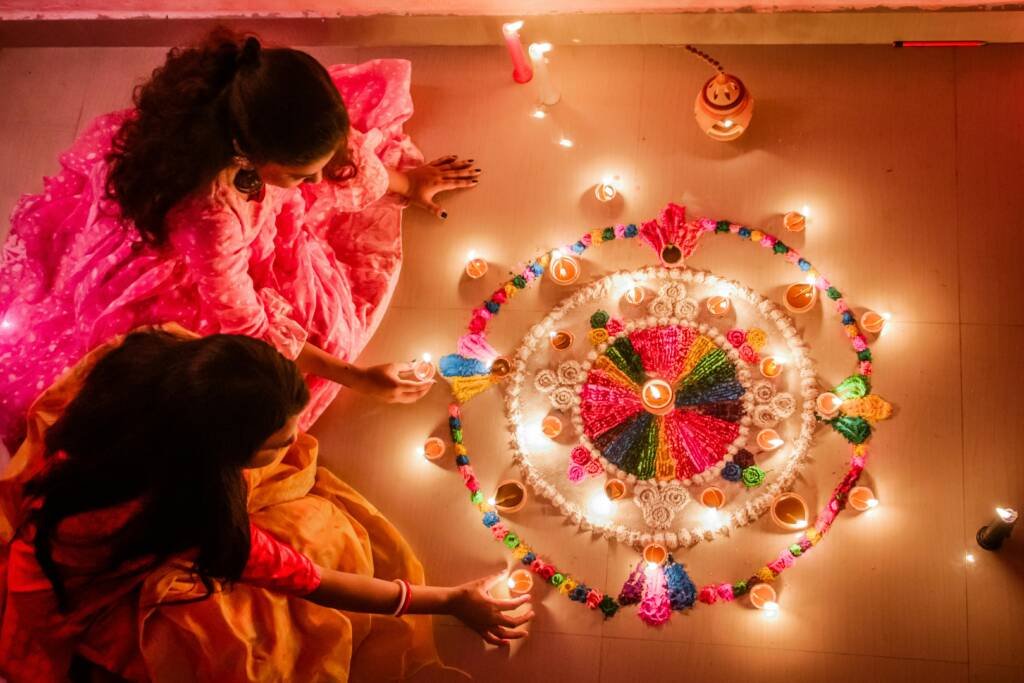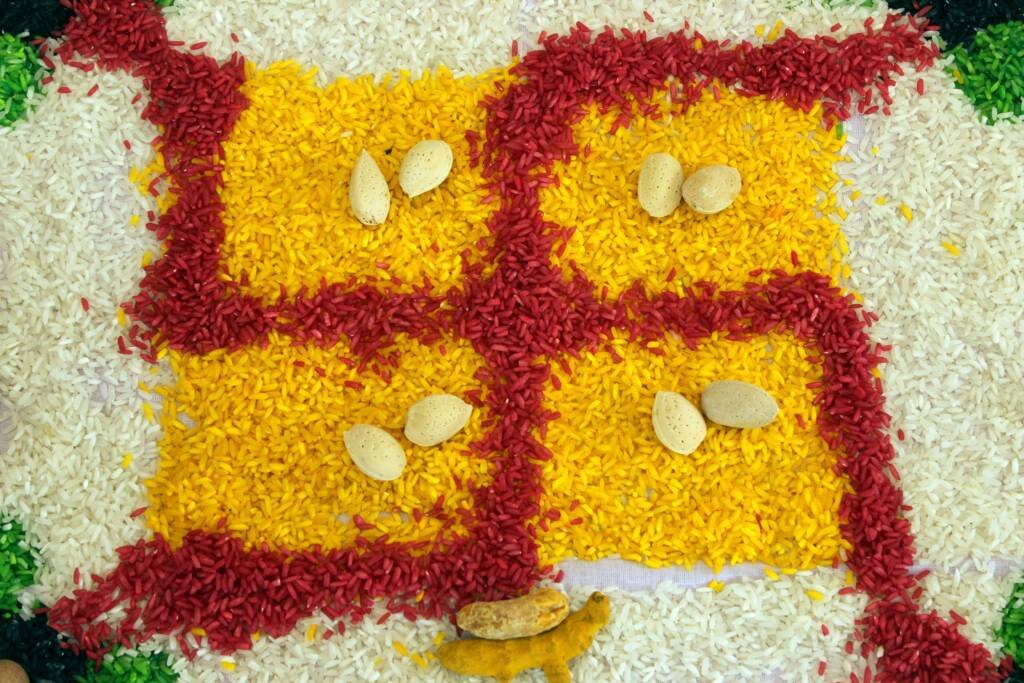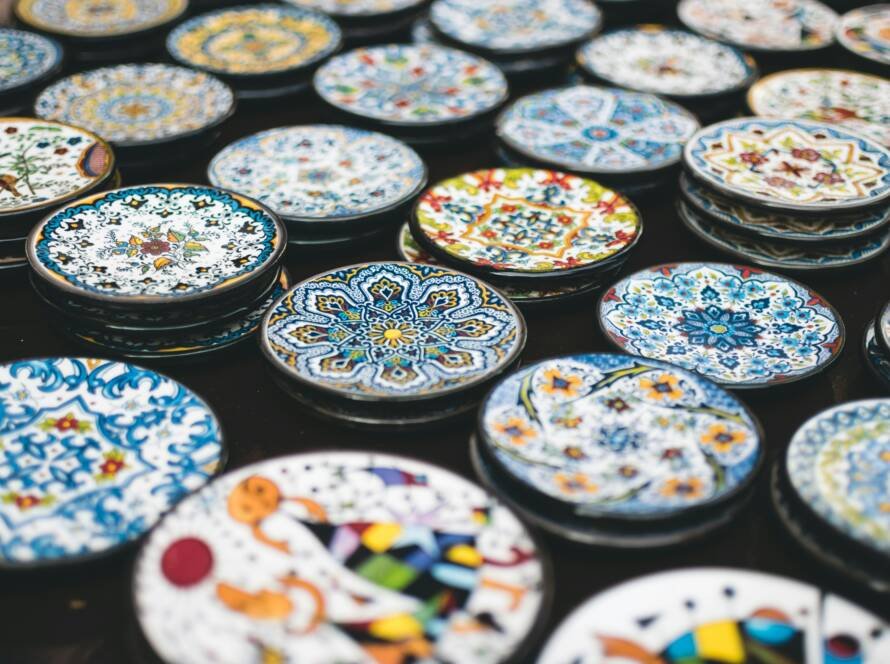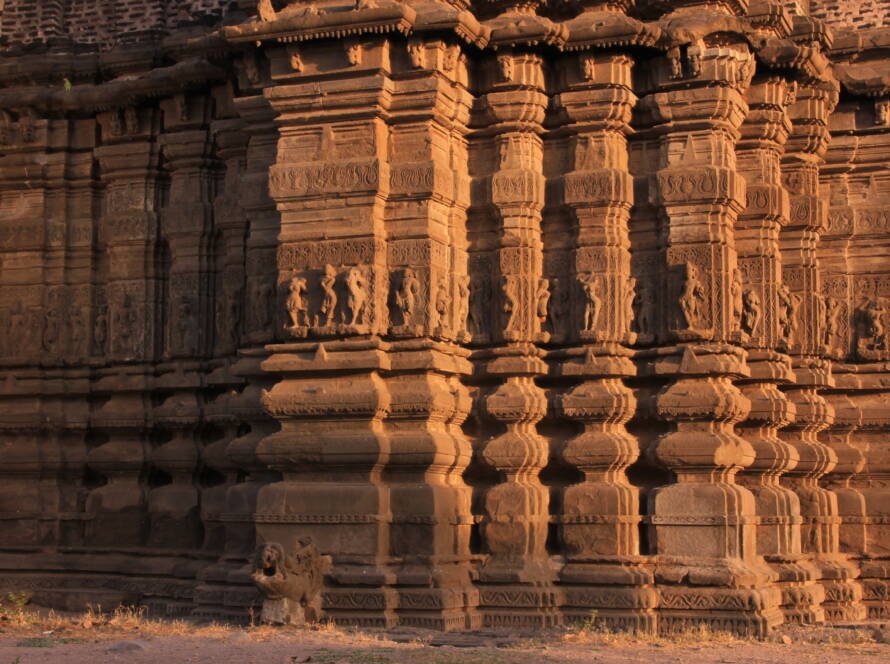A Sacred Welcome Woven in Dust and Light
At the break of dawn, before the world stirs fully awake, a quiet ritual unfolds at the threshold of many Indian homes. Bare hands gather rice flour or powdered pigments, and a woman stoops gracefully to the ground. In a few swift, practiced movements, curves and dots blossom into sacred geometry. These floor patterns—Rangoli in the West, Kolam in the South—are not mere decorations. They are silent prayers, mathematical meditations, and cultural heirlooms passed from mother to daughter, generation to generation.
There is something deeply intimate and sacred about creating art that will be walked over, scattered by the breeze, or dissolved by rain—only to be redrawn the next day. It is a lesson in impermanence, humility, and devotion.
Patterns Rooted in Philosophy and Precision
At the heart of Kolam and Rangoli lies a fascinating interplay between spirituality and symmetry. Kolams, especially in Tamil Nadu, are drawn using a grid of dots (pullis), with lines looping around them in rhythmic patterns that follow mathematical logic. Some are based on fractals, others mirror concepts of infinity, balance, and cosmic order. In fact, many traditional Kolams are built on principles similar to those found in computer algorithms and geometric progressions.
Rangoli, meanwhile, flourishes in more curvilinear, free-flowing forms in states like Maharashtra, Karnataka, and Gujarat. It embraces florals, deities, and nature’s motifs, often brimming with vibrant hues. While Kolam is often minimalist and drawn daily with white rice flour to feed ants and birds—symbolizing harmony with all life—Rangoli frequently celebrates festivals and special occasions in exuberant bursts of color.
Despite their regional differences, both forms echo a shared worldview: that art, math, and devotion are not separate pursuits, but one and the same.


Rituals Etched in Dust and Memory
These patterns are more than aesthetic traditions—they are rituals that sanctify space and time. Kolam and Rangoli are drawn at thresholds, symbolic liminal spaces between the inner and outer worlds. They are believed to welcome Lakshmi, the goddess of wealth, and ward off evil. Each design tells a story—of hope, celebration, prosperity, or the everyday sacred.
There is also an unspoken rhythm in the act: the quiet focus of the artist, the bend of the spine, the light pressure of the hand, the gathering of dust and pigment into meaning. It is meditative and grounding—a moment where the mundane meets the divine, where floor becomes canvas and home becomes temple.
In villages and cities alike, the floor art becomes a communal language—unspoken, but instantly understood. During festivals like Pongal or Diwali, entire streets bloom with designs, a shared celebration crafted from patience, skill, and cultural pride.
Why It Still Resonates
In today’s digitized, fast-moving world, the quiet grace of Rangoli and Kolam offers a moment of pause. It connects us not only to our ancestors but also to something deeply human—the urge to create, to offer, to find meaning in everyday acts.
These floor patterns remind us that beauty can be transient and still profound, that mathematics can be sacred, and that tradition, when practiced with intention, becomes a form of mindfulness. For the younger generation rediscovering this art, there is a renewed sense of identity and belonging—an awakening to the quiet power of indigenous knowledge.
In educational spaces, Kolam is now being explored for its STEM potential—its links to symmetry, algorithms, and spatial understanding—bringing an age-old tradition into contemporary pedagogy.
The Lasting Impression of Impermanence
When the sun rises higher and footsteps begin to smudge the patterns, there is no regret—only readiness for the next morning. The floor is swept clean, and the ritual begins again.
This daily act of drawing and erasing teaches us that art need not be permanent to be meaningful, and that devotion need not be loud to be powerful. In the dust of rice flour, in the loops and spirals, we see the eternal dance of creation and dissolution—of form and formlessness.
To stand before a Kolam or Rangoli is to feel something stir quietly within—an ancient echo, a sacred familiarity. And in that moment, we are not just observers. We are part of a living tradition, etched lightly upon the earth, yet deeply within our soul.
#RangoliKolam #IndianFolkArt #SacredGeometry #CulturalHeritage #MathInArt #TraditionsThatLive



